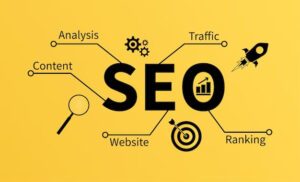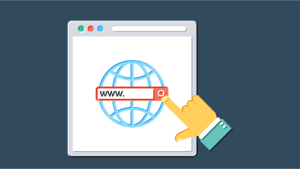Your customers are trying to give you money, but you’re making it too hard for them. That’s the harsh reality facing most businesses in 2025. While companies obsess over attracting new visitors, they’re hemorrhaging revenue through broken customer journeys that frustrate buyers and send them straight to competitors. Our analysis of hundreds of customer journeys reveals that the average business misses five critical touchpoints that could increase conversions by up to 47%. This week, we’re exposing these hidden opportunities and showing you exactly how to capture the revenue that’s already within your reach.
The Invisible First Impression: Pre-Website Touchpoints
Your customer journey doesn’t begin when someone lands on your website—it starts the moment they become aware of their problem. Yet most businesses completely ignore these crucial pre-arrival touchpoints, missing opportunities to shape perceptions and guide decisions before prospects even know you exist. This oversight costs businesses thousands in lost revenue every month.
Consider what happens before someone searches for your services. They’re reading reviews, asking friends for recommendations, scrolling through social media, and forming opinions based on snippets of information. Smart businesses plant seeds during this research phase through strategic content marketing that appears where prospects naturally look for answers. A Toronto accounting firm increased inquiries by 65% simply by creating content that appeared in “how to choose an accountant” searches—capturing attention before competitors even entered the conversation.
The pre-website journey also includes those critical micro-moments when someone sees your business name in search results, social media, or directories. These fleeting impressions determine whether someone clicks through or scrolls past. Optimizing meta descriptions, social media profiles, and directory listings to clearly communicate value propositions can double click-through rates. Every element should answer the prospect’s implicit question: “Why should I choose you over the ten other options I’m seeing?”
The 3-Second Decision: Homepage Psychology That Converts
You have exactly three seconds. That’s how long visitors spend deciding whether to stay on your website or hit the back button. Yet most homepages waste these precious seconds on vague headlines, cluttered designs, and unclear value propositions. This isn’t just poor design—it’s revenue abandonment at scale.
The psychology of homepage optimization goes far beyond aesthetics. Successful web design and development focuses on cognitive load reduction, visual hierarchy, and emotional triggers that guide visitors toward desired actions. Heat mapping studies reveal that visitors follow predictable patterns, scanning for specific information in specific places. When businesses align their design with these patterns, conversions increase dramatically. A B2B software company improved their homepage conversion rate from 2% to 8% simply by repositioning key elements to match natural scanning patterns.
The most expensive mistake happens in the hero section—that prime real estate above the fold. Generic statements like “Welcome to Our Business” or “Quality Service Since 1995” waste the most valuable space on your website. Instead, successful businesses use this space to immediately communicate three things: who they help, what problem they solve, and what makes them different. When visitors instantly recognize themselves and their challenges in your messaging, they stay, explore, and eventually buy.
The Trust Gap: Social Proof Deserts
Between initial interest and final purchase lies a canyon of doubt that swallows countless potential sales. Customers need reassurance that you can deliver on your promises, yet most businesses scatter weak social proof randomly across their sites or, worse, ignore it entirely. This trust gap represents one of the most fixable yet overlooked conversion killers in digital marketing.
Strategic social proof placement follows the customer’s doubt pattern. Early in the journey, visitors wonder, “Do others like me use this?” Later, they ask, “What specific results can I expect?” Finally, they need to know, “What if something goes wrong?” Each stage requires different types of proof. Industry logos build initial credibility. Detailed case studies address outcome concerns. Strong guarantees overcome final hesitations. A Toronto renovation company increased conversions by 40% by mapping social proof to specific journey stages rather than randomly displaying testimonials.
The sophistication of social proof has evolved beyond simple testimonials. Video testimonials outperform text by 300%. Specific, results-focused case studies trump generic praise. Real-time proof notifications showing recent customer actions create urgency and validation simultaneously. Most powerfully, addressing common objections through customer stories preemptively overcomes barriers before they become deal-breakers. When implemented strategically through social media marketing and website optimization, social proof transforms from decoration to conversion driver.
The Forgotten Follow-Up: Post-Purchase Optimization
The sale isn’t the end of the customer journey—it’s the beginning of your most profitable relationship. Yet businesses routinely abandon customers immediately after purchase, missing opportunities for upsells, referrals, and lifetime value optimization. This post-purchase desert costs more in lost revenue than any acquisition challenge.
The first 48 hours after purchase represent a golden window of opportunity. Customers are most engaged, most satisfied, and most likely to take additional actions that benefit your business. Smart companies use this window to solidify relationships through strategic onboarding sequences, surprise bonuses, and immediate value delivery. A Toronto fitness equipment retailer increased average order value by 35% simply by sending personalized workout plans within 24 hours of equipment purchases.
Post-purchase optimization extends far beyond immediate upsells. Creating remarkable unboxing experiences for physical products, exceptional onboarding for services, and unexpected moments of delight throughout the customer relationship transforms one-time buyers into lifetime advocates. The math is compelling: increasing customer retention by just 5% can boost profits by 25-95%. Yet most businesses invest ten times more in acquisition than retention, ignoring the goldmine in their existing customer base.
The Mobile Maze: Conversion Killers in Your Pocket
Mobile traffic dominates, yet mobile conversion rates lag desktop by up to 50% for most businesses. This mobile conversion gap isn’t a technical problem—it’s a journey design failure. Companies that simply shrink their desktop experience for mobile screens miss fundamental differences in how mobile users behave, what they need, and what frustrates them into abandonment.
Mobile users operate in what we call “micro-sessions”—brief interactions often interrupted by real life. They’re standing in line, riding transit, or multitasking while watching TV. This context demands radically different journey design. Forms that work fine on desktop become abandonment triggers on mobile. Navigation that seems intuitive with a mouse becomes frustrating with thumbs. A local restaurant increased mobile orders by 80% by reducing their checkout process from five screens to two and implementing Apple Pay for one-touch purchasing.
The technical aspects of mobile optimization extend beyond responsive design to performance optimization. Every second of load time costs conversions—53% of mobile users abandon sites that take over three seconds to load. Implementing accelerated mobile pages (AMP), optimizing images, and leveraging browser caching can dramatically improve mobile performance. Combined with journey optimization and superior SEO practices, businesses can close the mobile conversion gap and capture revenue competitors leave on the table.
The Integration Opportunity: Connecting Digital and Physical Worlds
The most overlooked touchpoints exist at the intersection of online and offline experiences. While customers don’t distinguish between channels, most businesses maintain rigid separations that create friction and frustration. These integration failures represent massive missed opportunities for revenue growth and customer satisfaction.
Consider how modern customers actually behave: they research online before visiting stores, start purchases on mobile and complete on desktop, expect online orders to be returnable in-store. Yet most businesses force customers to restart their journey when switching channels. A Toronto furniture retailer doubled sales by implementing “save for later” functionality that worked across all channels, allowing customers to build wish lists online then visit stores to experience products physically before purchasing.
True omnichannel integration requires more than technical connections—it demands rethinking the entire customer journey from the customer’s perspective. This includes surprising touchpoints like print and ship marketing materials that seamlessly connect to digital experiences through QR codes and personalized URLs. When every touchpoint recognizes the customer and their history, friction disappears and conversions soar. The businesses winning in 2025 are those that eliminate channel boundaries in favor of unified customer experiences.
Mining Your Journey: The Revenue Audit Process
Identifying missed touchpoints in your customer journey requires systematic analysis, not guesswork. The most successful businesses conduct regular journey audits, mapping every interaction from initial awareness through long-term loyalty. This process invariably reveals shocking gaps and quick-win opportunities that can be addressed immediately.
Start your audit by actually experiencing your customer journey as different personas. Try buying your product on mobile while distracted. Attempt to find specific information when you’re in a hurry. Call your customer service and see how long resolution takes. These exercises reveal friction points invisible from the inside. Document every moment of frustration, confusion, or delay—each represents lost revenue.
Analytics provide the quantitative backbone of journey optimization. Set up proper tracking for micro-conversions, not just final sales. Monitor where visitors drop off, which pages have high exit rates, and which paths lead to purchase. Heat mapping and session recording tools reveal exactly how users interact with your touchpoints. A/B testing then validates which improvements actually impact revenue. This data-driven approach transforms journey optimization from art to science.
Your Action Plan: Capturing Hidden Revenue This Week
Knowledge without action is worthless. The businesses seeing dramatic revenue increases from journey optimization start with focused improvements rather than overwhelming overhauls. Pick one missed touchpoint from this article and commit to optimizing it this week. The compound effect of incremental improvements will transform your conversion rates over time.
Begin with the highest-impact, lowest-effort improvements. Often, this means optimizing your homepage hero section or implementing exit-intent popups to capture abandoning visitors. These changes can be implemented in hours but impact every visitor to your site. Track results meticulously—you need baseline metrics to measure improvement and build momentum for larger initiatives.
Create a quarterly journey optimization calendar. Each quarter, focus on a different aspect of the journey. Q3 might target mobile optimization. Q4 could emphasize post-purchase experience as you head into the holiday season. This systematic approach ensures continuous improvement while preventing initiative fatigue. Document what works and why, building a playbook of proven optimizations unique to your business.
The Competitive Advantage of Journey Excellence
In a world where products and services increasingly commoditize, customer journey excellence becomes the ultimate differentiator. Businesses that obsess over every touchpoint don’t just capture more revenue—they build moats competitors can’t cross. When every interaction delights, customers become advocates. When journeys feel effortless, price becomes secondary. When experiences exceed expectations, loyalty follows naturally.
The investment in journey optimization pays dividends far beyond immediate revenue gains. Reduced customer acquisition costs, increased lifetime values, and organic word-of-mouth growth all flow from journey excellence. Moreover, the insights gained from optimization efforts inform product development, service improvements, and strategic decisions across the business.
Your Next Steps: From Insight to Income
The hidden revenue in your customer journey won’t capture itself. Every day you delay optimization is another day of accepting suboptimal conversions, frustrated customers, and lost opportunities. The businesses thriving in 2025 are those that view journey optimization not as a project but as an ongoing commitment to customer success and business growth.
Start today. Choose one touchpoint. Make one improvement. Measure the results. Then repeat. This simple formula, applied consistently, transforms average businesses into exceptional ones. The revenue hiding in your customer journey is waiting to be discovered—the only question is whether you’ll capture it or let competitors claim it instead.
Ready to unlock the hidden revenue in your customer journey? ByteInspired specializes in comprehensive journey optimization that transforms every touchpoint into a conversion opportunity. Our proven process has helped Toronto businesses increase conversions by an average of 45% within 90 days. Don’t let another day of revenue slip through the cracks in your customer journey. Contact us today to schedule your journey audit and discover exactly how much money you’re leaving on the table.
To visit our social media please click on Facebook and Instagram





